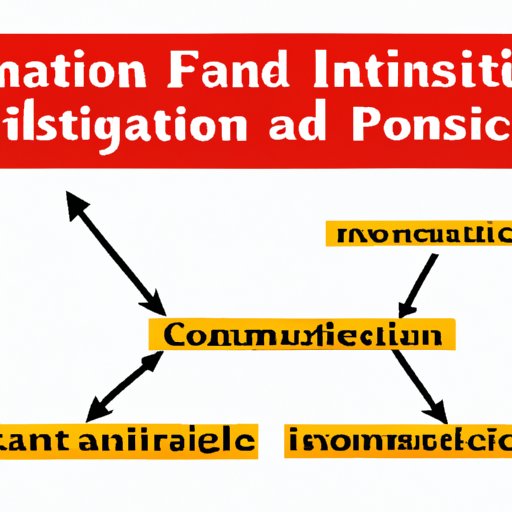I. Introduction
Cost-push inflation is a critical economic challenge facing many countries globally. It has a significant impact on economic growth by increasing the production costs, and thus, prices of goods and services. In this article, we will explore what cost-push inflation is, analyze scenarios to identify which ones are examples of cost-push inflation, and examine the various factors that drive it.
II. Understanding the Economics of Cost-Push Inflation: A Closer Look at Scenarios
Cost-push inflation occurs when the cost of production and labor increase, forcing producers to charge higher prices to maintain their profit margins. It is the opposite of demand-pull inflation, which occurs when the demand for goods and services increases, leading to a rise in prices.
Cost-push inflation is fueled by rising production costs that affect the supply of goods and services. In turn, this causes inflation as producers pass on the increased costs to consumers. Examples of increased costs include wages and salaries, raw materials, energy prices, and taxes.
III. Cost-Push Inflation: Causes and Impacts on the Economy
There are various factors that contribute to cost-push inflation, including rising energy prices, increases in import prices due to exchange rate movements, and higher wages. Other factors include natural disasters, which cause disruptions to the supply chain, and technological changes that increase production costs.
Cost-push inflation has negative impacts on the economy in several ways. For instance, it leads to a decrease in purchasing power since consumers have to pay more for goods and services. Higher prices reduce the amount of goods and services people can purchase, and this has a domino effect on supply and demand. It also leads to a decrease in real wages as workers’ wages fail to keep up with the rising cost of living, causing them to cut back on spending.
To address cost-push inflation, governments may implement various policies such as monetary measures, such as increasing interest rates, and fiscal policies, such as adjusting taxes and government spending.
IV. Analyzing Scenarios of Cost-Push Inflation and Its Effects
There are several case studies that illustrate cost-push inflation scenarios, such as rising oil prices, natural disasters, and supply chain disruptions. When these factors occur, they lead to an increase in the cost of production, and prices subsequently rise. The economic effects of cost-push inflation vary based on its severity and persistence. In extreme cases, it can lead to stagflation.
V. How Price Hikes in Production Trigger Cost-Push Inflation in the Economy
Production costs significantly impact the prices of goods and services. When these costs rise, producers tend to increase prices to offset the losses incurred. This results in a rise in inflation, which eventually leads to a decrease in the purchasing power of consumers. There are different ways in which production costs can rise, including energy prices, raw material prices, and labor costs.
The consequence of high production costs is the reduction of profit margins for firms. As a result, businesses may seek ways to reduce production costs, such as making cuts to employees and processes, which, in turn, adversely affects employment opportunities.
VI. The Role of Supply Side Factors in Cost-Push Inflation: Case Studies
Labor costs, raw material prices, and taxes are frequently identified as significant supply side factors contributing to cost-push inflation. Rising labor costs lead to production cost increases, and this may cause firms to redesign their staffing structure and opt for lower wage employees, leading to a decrease in employment rates. Raw material costs may also increase due to supply chain disruptions, transportation, and other factors outside of a company’s control. Tax rate increases lead to higher production costs, and this ultimately manifests as inflation.
Policy measures that can reduce supply-side inflation include limiting government regulation and increasing investment in technological advancement for lower production costs.
VII. Exploring the Link Between Cost-Push Inflation and Stagflation
Stagflation is an economic phenomenon in which inflation rates rise, while economic growth simultaneously declines. Cost-push inflation can lead to stagflation if production costs rise without a corresponding increase in aggregate demand. The decline in economic growth can lead to job losses and reduced investment opportunities. The impact of stagflation can be widespread and lengthy.
VIII. Cost-Push Inflation: Real-Life Examples of Its Occurrence in Different Industries
Many different industries are susceptible to cost-push inflation, including the commodity market, consumer goods industry, and services sector. These industries can experience significant price hikes that impact the global economy. An example of this is the recent rise in oil prices, which has a knock-on effect on other sectors such as transport and manufacturing.
IX. Conclusion
Cost-push inflation has a significant impact on the economy and affects the overall living standards of citizens. As noted in this article, the negative impacts of cost-push inflation can range from reduced purchasing power to a decline in economic growth. While overcoming this global economic challenge may prove difficult, there are policy tools that governments can utilize to minimize the negative effects of cost-push inflation.
